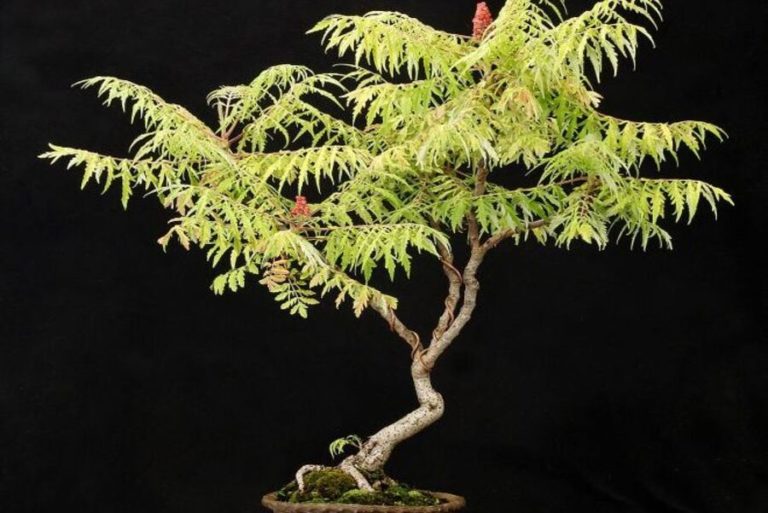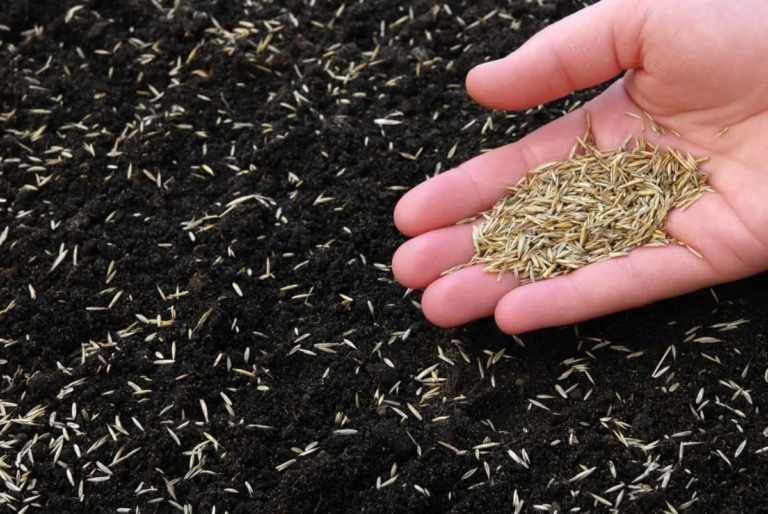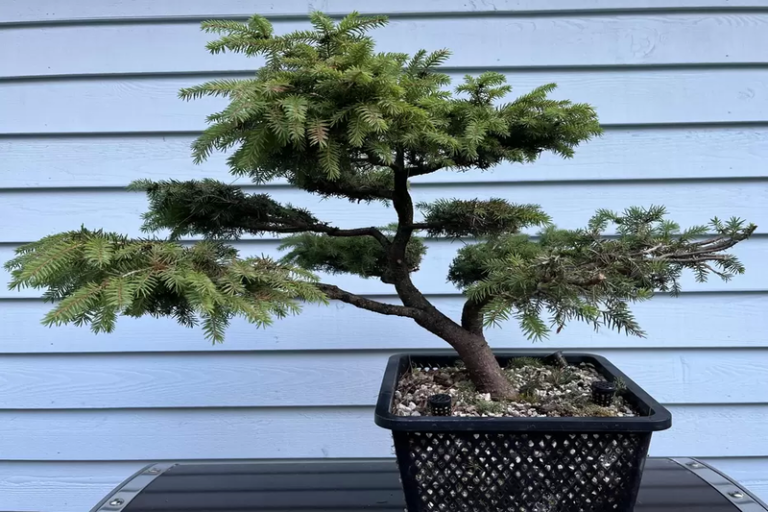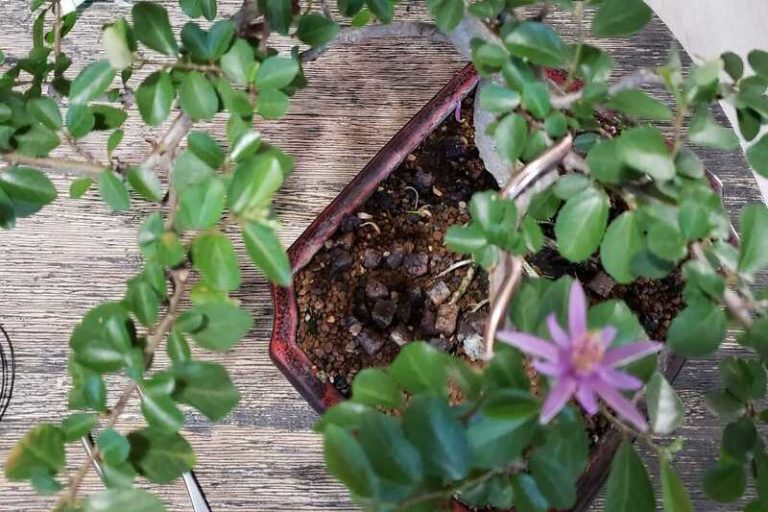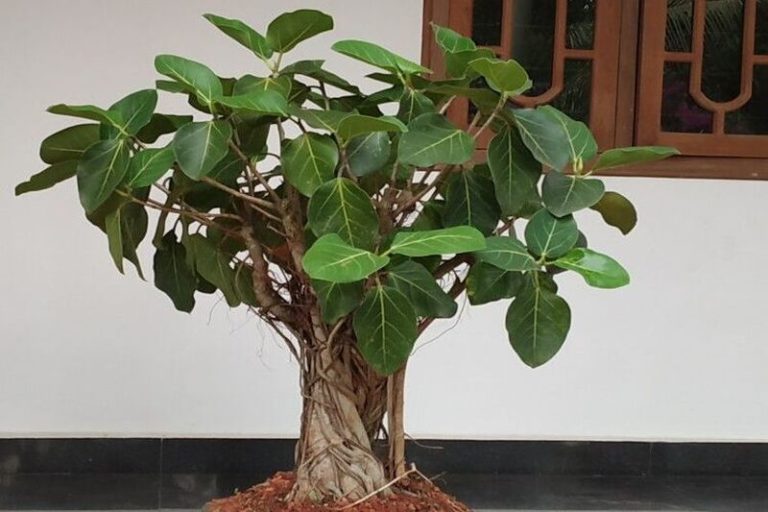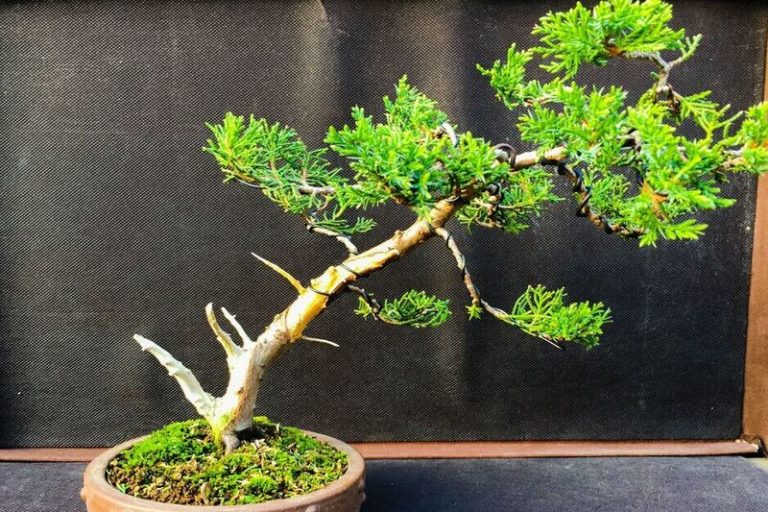Smoke Tree Bonsai : Harnessing the Beauty of Colors and Texture
Bonsai trees are interesting little trees that encapsulate nature’s beauty in a small space. Among the various bonsai tree kinds, smoke tree bonsai stands out for its distinct and intriguing characteristics. In this article, we will delve into the enthralling world of smoke tree bonsai and discover how to care for these lovely sculptures.
What is a Smoke Tree Bonsai?
A smoke tree bonsai is a miniature version of a smoke tree that has been shaped and cultivated using bonsai techniques. It captures the beauty of smoke trees in a small, potted form. Smoke trees are known for their vibrant foliage and unique smoke-like blooms. Creating a smoke tree bonsai involves careful shaping and training through pruning, wiring, and shaping. It requires specific care, including well-draining soil, appropriate sunlight, and regular maintenance. Smoke tree bonsai can be displayed indoors or outdoors, and with proper care, it becomes a captivating and elegant addition to any bonsai collection or garden.
History and Origins of the Smoke Tree Bonsai
The history and origins of the smoke tree bonsai can be traced back to the ancient art of bonsai itself, which originated in China over a thousand years ago and later spread to Japan. Bonsai is the practice of cultivating and shaping miniature trees in containers, creating living artworks that reflect the beauty and harmony of nature.
Smoke trees, scientifically known as Cotinus spp., have been appreciated for their stunning foliage and unique blooms for centuries. While the exact origin of smoke tree bonsai is not well documented, it is believed to have emerged as a variation of the traditional bonsai practice.
The cultivation of smoke tree bonsai likely started in Japan, where bonsai art flourished and reached its pinnacle. Japanese bonsai enthusiasts began experimenting with different tree species, including smoke trees, to create smaller versions of these captivating trees. Through careful cultivation, shaping, and training techniques, smoke tree bonsai was born as a distinct variety within the bonsai world.
Over time, smoke tree bonsai gained popularity and spread to other countries and regions where bonsai art was practiced and appreciated. Bonsai enthusiasts around the world have embraced the beauty and uniqueness of smoke tree bonsai, incorporating them into their collections and displays.
Today, smoke tree bonsai can be found in bonsai exhibitions, nurseries, and private collections globally. The art of cultivating smoke tree bonsai continues to evolve as bonsai artists experiment with different techniques and styles to create stunning and enchanting specimens.
The history and origins of the smoke tree bonsai are tied to the rich customs and culture history of bonsai itself. It shows how creative and clever bonsai artists can be by catching the spirit and beauty of smoke trees in a small size. This will keep the art of bonsai alive for future generations.
Smoke Tree Bonsai and Their Symbolism
Smoke tree bonsai, like all bonsai trees, hold symbolism and meaning that reflect the deeper philosophies and values associated with the art of bonsai. While there isn’t specific symbolism attributed solely to smoke tree bonsai, we can draw upon the broader symbolism associated with bonsai as a whole.
Harmony and Balance: Bonsai, like the smoke tree bonsai, represent the need for harmony and balance between humans and nature. The careful shape and training of the tree show how the bonsai artist and nature work together to create a form that is both balanced and pleasing to the eye.
Patience and persistence: Growing and creating a smoke tree bonsai takes years of careful care and attention. This shows how important it is to be patient and keep going, and it reminds us that with time and hard work, we can do great things.
Reflection and Contemplation: Bonsai, including smoke tree bonsai, encourages contemplation and reflection. The serene beauty of these miniature trees invites viewers to pause and appreciate the present moment, fostering a sense of calm and tranquility.
Resilience and Adaptability: Smoke tree bonsai, like other bonsai trees, represent nature’s persistence and adaptation. These trees have been carefully cultivated to resist the challenges of being confined in a tiny location, demonstrating their capacity to adapt and grow even under unfavorable situations.
Connection with Nature: Smoke tree bonsai remind us of our connection to nature. They bring a bit of nature into our homes, letting us to experience the natural environment’s beauty and wonder.
It’s important to note that symbolism can vary across cultures and individuals. The personal interpretation and symbolism associated with smoke tree bonsai can differ based on one’s own experiences, beliefs, and cultural backgrounds. Ultimately, the symbolism of smoke tree bonsai, as with any bonsai, lies in the personal connection and meaning it holds for the individuals who appreciate and care for these miniature living artworks.

Characteristics of the Smoke Tree Bonsai
Smoke tree bonsai possess several distinctive characteristics that set them apart and make them visually appealing. Here are some key characteristics of smoke tree bonsai:
Vibrant Foliage: Smoke tree bonsai displays vibrant foliage that can range in color from shades of green to purple and red. The leaves often have an attractive serrated or lobed shape, adding to the overall visual interest of the tree.
Unique Smoke-Like Blooms: One of the most appealing aspects of smoke tree bonsai is its distinctive blossoms, which mimic puffs of smoke. These blooms often emerge in groups and can range in color from pink to purple to creamy white. The blossoms’ delicate, wispy look gives an ethereal appeal to the bonsai.
Deciduous Nature: Smoke tree bonsai, like their larger counterparts, are deciduous. This means they go through seasonal changes, shedding their leaves during autumn and remaining bare during winter. The changing colors and bare branches during the dormant season contribute to the bonsai’s visual interest throughout the year.
Small to Medium Size: Smoke tree bonsai are generally smaller or medium-sized trees, making them suitable for growing in containers. Their compact size allows for easy placement and display both indoors and outdoors.
Sculptural Branching: The branching pattern of smoke tree bonsai often showcases an intricate and sculptural quality. The branches can twist, turn, and intertwine, creating a sense of movement and artistic expression within the tree’s form.
Tolerant of Pruning and Shaping: One of the most appealing aspects of smoke tree bonsai is its distinctive blossoms that mimic puffs of smoke. These blooms often emerge in bunches and range in color from pink to purple to creamy white. The delicate, wispy look of the blossoms gives an ethereal appeal to the bonsai.
Drought Tolerance: Smoke trees, including smoke tree bonsai, have a moderate level of drought tolerance. This characteristic can be advantageous for bonsai enthusiasts who may occasionally miss a watering, as the trees are generally able to withstand short periods of dryness.
Overall, smoke tree bonsai possess a combination of vibrant foliage, unique blooms, and sculptural branching that contribute to their distinct beauty. These characteristics make smoke tree bonsai an attractive choice for bonsai enthusiasts who appreciate the visual charm and artistic potential of these captivating miniature trees.
Types of Smoke Tree Bonsai
There are various varieties of smoke trees (Cotinus spp.) that are widely utilized for bonsai. Each variety has its own distinct traits and visual appeal. Here are some common varieties of smoke tree bonsai:
1. Cotinus coggygria: Also known as the European smoke tree or Eurasian smoke tree, Cotinus coggygria is a commonly cultivated species for bonsai. It features vibrant foliage in shades of green, purple, or red. The smoke-like blooms can range from pink to creamy white.
2. Cotinus obovatus: Known as the American smoke tree, Cotinus obovatus is native to North America. It has larger leaves compared to other smoke tree species and displays beautiful autumn foliage in shades of orange, red, and yellow. The smoke-like blooms appear in clusters and can be pink or creamy white.
3. Cotinus ‘Grace’: Cotinus ‘Grace’ is a popular cultivar that is highly sought after for bonsai. It is a hybrid smoke tree that combines the characteristics of Cotinus coggygria and Cotinus obovatus. ‘Grace’ features large, deep purple leaves and produces abundant, airy blooms.
4. Cotinus ‘Royal Purple’: Another cultivar, Cotinus ‘Royal Purple, is known for its deep purple foliage throughout the growing season. The leaves retain their rich color, providing an intense visual contrast to the smoke-like blooms that emerge in pinkish-red hues.
5. Cotinus ‘Golden Spirit’: Cotinus ‘Golden Spirit’ is a cultivar that offers a unique twist to smoke tree bonsai. It features golden-yellow foliage, creating a striking and eye-catching display. The foliage retains its vibrant color throughout the growing season.
These are only a few examples of the various forms of smoke tree bonsai. Bonsai lovers can experiment with several smoke tree species and cultivars to discover the one that best meets their needs in terms of leaf color, bloom qualities, and overall aesthetic appeal.

How to Grow a Smoke Tree Bonsai
Growing a smoke tree bonsai requires careful attention to the specific needs of the tree to ensure its health and development. Here is a step-by-step guide on how to grow a smoke tree bonsai:
Selection of Species: Choose a suitable smoke tree species or cultivar for bonsai cultivation. Consider factors such as your climate, available space, and personal preference in terms of leaf color and bloom characteristics.
Container and Soil: Choose a bonsai pot that fits the plant and lets it drain well. Use a bonsai soil mix that is a mix of organic and artificial parts that drains well. This will make sure that the roots of the tree have enough water and air.
Sunlight and Temperature: Smoke trees flourish in circumstances ranging from full sun to light shade. Put your bonsai in a spot that gets at least six hours of direct sunshine every day. Check that the temperature is within the range recommended for your selected smoke tree species.
Watering: Regular and consistent watering is crucial for the health of your smoke tree bonsai. Water the tree thoroughly whenever the soil begins to dry out, but avoid overwatering. Check the moisture level by inserting a finger into the soil to determine if watering is necessary.
Fertilization: Provide a balanced fertilizer designed exclusively for bonsai trees. Follow the dose and frequency recommendations exactly as directed. Fertilize throughout the growing season, which is usually from spring to October, and reduce or stop fertilizing during the dormant period.
Pruning and Shaping: Pruning is essential for maintaining the desired shape and size of your smoke tree bonsai. Regularly trim back excessive growth and prune to promote branch structure and density. Use bonsai-specific tools such as concave cutters and branch cutters for precise pruning.
Wiring and Shaping: Wiring can be used to guide the branches and shape your smoke tree bonsai. Carefully wrap bonsai wire around branches, being cautious not to damage the bark. Gently bend and position the branches to create the desired artistic form. Monitor the wiring regularly to avoid cutting into the branches.
Protection from Extreme Conditions: Protect your smoke tree bonsai from extreme weather conditions such as frost, excessive heat, and strong winds. Provide appropriate shelter or move the bonsai indoors during extreme conditions to prevent damage to the tree.
Pest and Disease Management: Examine your bonsai smoke tree on a regular basis for signs of parasites and diseases. Aphids, spider mites, and caterpillars are common parasites that can affect tobacco trees. Use insecticidal detergents or horticultural oils to treat and control an infestation if it is discovered.
Ongoing Care and Maintenance: Continue to monitor the health and growth of your smoke tree bonsai throughout the seasons. Adjust watering, fertilization, and pruning practices as needed. Repotting may be required every two to three years to refresh the soil and promote root health.
Growing a smoke tree bonsai takes time, attention to detail, and consistent maintenance. You may produce a beautiful and healthy smoke tree bonsai that will offer delight and appreciation to your bonsai collection by providing the correct circumstances and following suitable bonsai procedures.
Benefits of the Smoke Tree Bonsai
The smoke tree bonsai offers several benefits that make it a desirable addition to any bonsai collection or garden. Here are some of the benefits of having a smoke tree bonsai:
- Aesthetic Beauty: The smoke tree bonsai is visually stunning and adds a touch of elegance and beauty to any space. Its vibrant foliage, unique smoke-like blooms, and sculptural branching create an eye-catching display that captivates viewers.
- Compact Size: Smoke tree bonsai are generally tiny to medium in size, making them ideal for growing in pots and limited settings. Its small size makes it ideal for placing on tabletops, shelves, or outdoor exhibits, making it a flexible choice for bonsai aficionados with limited room.
- Artistic Expression: Growing and shaping a smoke tree bonsai offers a creative outlet for bonsai enthusiasts. The process of pruning, wiring, and shaping allows for artistic expression, enabling individuals to create unique and personalized bonsai designs.
- Connection to Nature: Having a smoke tree bonsai in your home brings a piece of nature inside. The small tree is a sign of the beauty and wonder of the natural world, which can help people feel calm and connected.
- Therapeutic Value: Caring for a smoke tree bonsai can be a therapeutic and calming activity. The process of nurturing and tending to the tree promotes mindfulness and relaxation, reducing stress and providing a sense of fulfillment.
- Educational Opportunity: Growing a smoke tree bonsai allows you to learn about horticulture, bonsai methods, and the unique qualities of smoke trees. It provides a hands-on learning experience that may broaden your awareness and admiration of nature and the art of bonsai.
- Bonsai Community: Being a part of the bonsai community allows bonsai aficionados to interact with other enthusiasts, share information and experiences, and participate in bonsai exhibits and activities. Owning a smoke tree bonsai gives an access point into this community and enables for participation and learning from others.
- Longevity: Smoke trees have a rather long lifespan, and with appropriate care, a smoke tree bonsai may live for many years, if not decades. This lifespan allows for a long and fulfilling connection with your bonsai tree, providing constant delight and appreciation over time.
These benefits make the smoke tree bonsai a desirable and rewarding choice for bonsai enthusiasts. It combines aesthetic beauty, creative expression, and a connection to nature, creating a fulfilling and enjoyable experience for bonsai enthusiasts of all levels.
Displaying and Showcasing the Smoke Tree Bonsai
Displaying and showcasing your smoke tree bonsai is an important aspect of appreciating its beauty and sharing it with others. Here are some tips for effectively displaying and showcasing your smoke tree bonsai:
1. Choosing the Right Location: Select a suitable location that highlights the beauty of your smoke tree bonsai. Consider factors such as lighting, temperature, and protection from extreme weather conditions. Indoors, choose a spot near a window that receives adequate sunlight. Outdoors, find a sheltered area that offers a balance of sun and shade.
2. Bonsai Stands and Tables: Utilize bonsai stands or tables to elevate your smoke tree bonsai, creating a focal point and enhancing its visibility. These stands come in various styles and materials, allowing you to choose one that complements the aesthetics of your bonsai and its surroundings.
3. Background and Complementary Elements: Consider the background against which your smoke tree bonsai will be displayed. Choose a backdrop that contrasts or complements the colors of the foliage and blooms. Additionally, you can add complementary elements such as rocks, accent plants, or miniature figurines to create a harmonious and aesthetically pleasing arrangement.
4. Rotating Display: Rotate the positioning of your smoke tree bonsai periodically to ensure even growth and exposure to sunlight. This practice prevents the tree from leaning in one direction and allows all sides of the bonsai to be appreciated.
5. Accentuating Seasonal Changes: Smoke trees undergo seasonal changes, including foliage color variations and the emergence of smoke-like blooms. Take advantage of these changes by showcasing your smoke tree bonsai during its most visually appealing seasons. Highlight the vibrant autumn colors or the delicate blooms to captivate viewers.
6. Bonsai Exhibition and Shows: Participate in bonsai exhibitions and shows to showcase your smoke tree bonsai to a wider audience. These events provide opportunities to engage with fellow enthusiasts, gain feedback, and learn from experienced bonsai artists. Follow the guidelines and requirements of the specific exhibition or show to ensure your smoke tree bonsai is displayed professionally.
7. Photography and Documentation: Document the growth and development of your smoke tree bonsai through photography. Capture its various stages, from initial styling to the maturing of the tree. Share these images on social media or create a photo album to preserve the memories and showcase the progression of your bonsai over time.
8. Sharing and Educating: Share your expertise and enthusiasm for smoke tree bonsai with others. Host bonsai classes or invite friends and relatives to see your bonsai collection. You may inspire and educate others about the art of bonsai and the special aspects of smoke tree bonsai by sharing your experiences and views.
Remember to care for and manage your smoke tree bonsai on a daily basis to keep it healthy and looking good when you show it off. With the right arrangement and attention to detail, your smoke tree bonsai will become the center of attention and make everyone who sees it happy and impressed.
Styling and Design of Smoke Tree Bonsai
When it comes to styling and designing a smoke tree bonsai, there are various techniques and considerations to create a visually appealing and balanced composition. Here are some guidelines to help you style and design your smoke tree bonsai:
Research and Study: Familiarize yourself with the growth habits and characteristics of smoke trees. Study photos and images of mature smoke trees in their natural form to understand how the branches and foliage develop. This will guide you in shaping your smoke tree bonsai.
Trunk and Branch Structure: Evaluate the trunk and branches of your smoke tree bonsai. Determine the desired style, such as informal upright, slanting, or cascading, and assess the potential of the existing branches to achieve that style. Select primary branches that radiate from the trunk in a balanced manner.
Pruning and Branch Placement: Your smoke tree bonsai needs to be pruned regularly to keep its shape and balance. Cut away extra growth and branches you don’t want to make a structure that is open and airy. Place the stems so that light can reach all parts of the tree. This will help the tree grow in a healthy way.
Wiring and Bending: Wiring is a technique used to guide and shape the branches of your smoke tree bonsai. Use bonsai wire to gently bend and position the branches in the desired direction. Be cautious not to damage the bark while wiring, and monitor the wire regularly to prevent it from cutting into the branches as they grow.
Taper and Proportions: Aim for a base that gets narrower as it grows taller. This makes things look old and beautiful. Think about the size of your smoke tree bonsai as a whole, and make sure that the stems get thinner as they reach the top. Avoid making things look top-heavy or off-balance.
Foliage Pads and Negative Space: Arrange the foliage of your smoke tree bonsai into distinct pads or layers. This creates depth and adds a sense of three-dimensionality to the design. Leave negative space between the foliage pads to enhance the overall balance and aesthetic appeal.
Balance and Movement: Strive for balance and movement in the design of your smoke tree bonsai. Create visual interest by incorporating gentle curves or twists in the trunk and branches. Avoid rigid, straight lines and symmetrical arrangements, as they may appear unnatural in bonsai design.
Consider the Container: Choose a bonsai container that complements the style and size of your smoke tree bonsai. Consider the color, shape, and texture of the container, ensuring it enhances the overall visual appeal without overshadowing the tree itself.
Continual Evaluation and Refinement: Bonsai styling is an ongoing process. Regularly evaluate your smoke tree bonsai and make adjustments as necessary. Allow the tree to grow and develop over time while also refining its shape and structure to achieve your desired design.
Remember, bonsai styling is an art form that requires patience and careful observation. Allow your creativity to guide you while respecting the natural growth patterns and characteristics of your smoke tree bonsai. With practice and experience, you can develop your own unique style and create a captivating design that showcases the beauty of your smoke tree bonsai.
How to Care for and Maintain a Smoke Tree Bonsai
Caring for and maintaining a smoke tree bonsai is essential to ensuring its health, vitality, and long-term growth. Here are some key care guidelines to help you maintain your smoke tree bonsai:
- Watering: Proper watering is crucial for the health of your smoke tree bonsai. Water the tree thoroughly whenever the top inch of the soil feels dry. Ensure that water penetrates the entire root system by watering until it flows out of the drainage holes. Avoid overwatering, as it can lead to root rot, and underwatering, as it can cause the tree to dry out.
- Sunlight: Smoke trees generally prefer full sun to partial shade conditions. Place your smoke tree bonsai in a location that receives at least six hours of direct sunlight each day. However, protect it from the scorching afternoon sun during the hottest months. Adjust the position of your bonsai as needed to ensure it receives adequate light.
- Temperature and Climate: Smoke trees can grow in a variety of settings, but they do best in cool to warm weather. Keep your smoke tree bonsai away from temperatures that are too hot or too cold, especially snow in colder areas. Move your bonsai to a protected place or add more covering during the winter to keep it from getting too cold.
- Fertilization: Your smoke tree bonsai needs to be fertilized regularly to get the nutrients it needs for healthy growth. Use a slow-release fertilizer that is appropriate and made for bonsai. Follow the directions on the package to use the fertilizer, which is usually from spring to fall when plants are growing. During the dormant time, you should cut back on or stop fertilizing.
- Pruning and Trimming: Pruning is vital for maintaining the shape and size of your smoke tree bonsai. Regularly trim back excessive growth, remove dead or diseased branches, and maintain a balanced branch structure. Prune during the tree’s dormant season or after the blooming period to minimize stress on the tree.
- Wiring and Shaping: Wiring can be used to guide and shape the branches of your smoke tree bonsai. Apply bonsai wire carefully to avoid damaging the bark, and adjust it as needed to achieve the desired shape. Monitor the wire regularly to prevent it from cutting into the branches as they grow. Remove the wire once the branches have set in their desired position.
- Repotting: Repot your smoke tree bonsai every two to three years to refresh the soil, promote root health, and control its size. Repotting is typically done in the spring before new growth begins. Trim back the roots, replace the soil, and place the bonsai in a slightly larger pot to allow for further development.
- Pest and Disease Control: Check your smoke tree bonsai for bugs like aphids, spider mites, or caterpillars on a regular basis. If you find an invasion, you can get rid of it by using soaps or oils that kill insects or agricultural oils. Make sure there is good air flow and good cleaning to keep fungal diseases from happening.
- Protection from Extreme Conditions: Protect your smoke tree bonsai from extreme weather conditions such as strong winds, heavy rain, or intense heat. Move the bonsai to a sheltered area or provide additional protection when needed. Monitor the tree closely during adverse weather conditions and take appropriate measures to minimize any potential damage.
- Regular Evaluation and Care: Regularly observe and evaluate the health and growth of your smoke tree bonsai. Check for signs of stress, disease, or pests. Adjust your care routine accordingly, including watering, fertilization, pruning, and wiring, to ensure the well-being of your bonsai.
To keep a smoke tree bonsai healthy, make sure it gets enough water, sunshine, temperature control, fertilizer, cutting, wiring, repotting, and protection from pests and diseases. Check on its health often and change care as needed. Find out how to care for a smoke tree based on your needs. With hard work, you can enjoy your tree for many years.
Smoke Tree Bonsai Care Sheet
| Aspect | Care Tips |
| Watering | Water thoroughly when the top inch of soil feels dry. Avoid overwatering or underwatering. Ensure proper drainage. |
| Sunlight | Place in a location with at least six hours of direct sunlight per day. Protect from scorching afternoon sun. Adjust position as needed. |
| Temperature | Prefer mild to warm conditions. Protect from frost and extreme temperatures. Move indoors during winter if necessary. |
| Humidity | Smoke trees can tolerate average humidity levels. No specific requirements. |
| Fertilization | Use a balanced, slow-release bonsai fertilizer. Apply during the growing season according to the manufacturer’s instructions. |
| Pruning and Trimming | Regularly trim back excessive growth, maintain shape, and remove dead or diseased branches. Prune during dormant season or after blooming. |
| Wiring and Styling | Use bonsai wire carefully to guide and shape branches. Adjust wire as needed. Remove wire once branches have set in desired position. |
| Repotting | Repot every 2-3 years during the spring before new growth. Trim roots, refresh soil, and place in a slightly larger pot if necessary. |
| Pest and Disease Control | Regularly inspect for pests. Use appropriate measures (insecticidal soaps, horticultural oils) if infestation occurs. Ensure good hygiene. |
| Winter Care | Protect from freezing temperatures and harsh winter conditions. Move to a sheltered area or provide insulation if needed. |
| Regular Maintenance | Regularly evaluate health and growth. Adjust care routine accordingly. Monitor for stress, disease, or pests. |
These care tips should serve as a helpful guide to ensure the proper care and maintenance of your smoke tree bonsai. However, please keep in mind that individual care requirements may vary, so it’s always best to observe your bonsai closely and make adjustments as needed.
Conclusion
Smoke tree bonsai is a captivating addition to any garden or living space. By understanding its unique characteristics and following proper care techniques, you can create a stunning masterpiece that reflects the beauty of nature in a small, delicate form. Start your journey into the world of smoke tree bonsai and let your creativity flourish as you nurture and shape these remarkable living artworks.
FAQ
Q: What is a Smoke Tree Bonsai?
A: A smoke tree bonsai is a miniature version of the smoke tree (Cotinus coggygria) that has been carefully cultivated and trained as a bonsai. It features a small tree with intricate branching, colorful foliage, and unique “smoke-like” blooms.
Q: How big do smoke tree bonsai grow?
A: Smoke tree bonsai typically range in height from 8 inches to 24 inches (20 cm to 60 cm), depending on the age, variety, and pruning techniques applied.
Q: Can smoke tree bonsai be kept indoors?
A: While smoke tree bonsai can be temporarily displayed indoors, they generally prefer to be outdoors in a location that receives ample sunlight. Indoor conditions may not provide sufficient light for the bonsai’s health and growth.
Q: How often should I water my smoke tree bonsai?
A: Water your smoke tree bonsai thoroughly whenever the top inch (2.5 cm) of soil feels dry. The frequency of watering may vary depending on environmental conditions, so it’s important to check the soil moisture regularly.
Q: When do smoke tree bonsai bloom?
A: Smoke tree bonsai typically produce their “smoke-like” blooms in late spring or early summer. The blooms are actually clusters of small, fuzzy flowers that range in color from light pink to deep purple.
Q: How do I prune my smoke tree bonsai?
A: Pruning smoke tree bonsai involves removing excessive growth, maintaining the desired shape, and eliminating dead or diseased branches. Pruning is usually done during the dormant season or after the blooming period to minimize stress on the tree.
Q: Can I wire the branches of my smoke tree bonsai?
A: Yes, wiring can be used to guide and shape the branches of your smoke tree bonsai. Carefully apply bonsai wire and adjust it as needed. Monitor the wire regularly to prevent it from cutting into the branches.
Q: How often should I fertilize my smoke tree bonsai?
A: Fertilize your smoke tree bonsai with a balanced, slow-release bonsai fertilizer during the growing season, usually from spring to autumn. Follow the instructions provided by the manufacturer for the appropriate application frequency.
Q: Do smoke tree bonsai require any special winter care?
A: Smoke tree bonsai should be protected from freezing temperatures and harsh winter conditions. Move them to a sheltered area or provide insulation, such as wrapping the pot with insulation material, to protect the roots.
Q: Can smoke tree bonsai be displayed in bonsai exhibitions?
A: Yes, smoke tree bonsai can be showcased in bonsai exhibitions and shows. Participating in such events provides an opportunity to share and appreciate the beauty of your bonsai with a wider audience.
Q: Can smoke tree bonsai be grown from seeds?
A: Yes, you can grow a smoke tree bonsai from a seed, but it takes time and patience because the trees grow slowly. Most smoke tree bonsai are grown from seedlings or bought already made into bonsai.
Q: How long does it take for a smoke tree bonsai to mature?
A: The time it takes for a smoke tree bonsai to mature and develop its desired characteristics can vary. It generally takes several years of careful cultivation and training to achieve a mature and well-styled smoke tree bonsai.
Q: Do smoke tree bonsai require special soil?
A: Smoke tree bonsai thrive in well-draining bonsai soil that retains moisture without becoming waterlogged. A mixture of components such as Akadama, pumice, and lava rock is commonly used to create an ideal soil composition.
Q: Can smoke tree bonsai be shaped into different bonsai styles?
A: Yes, smoke tree bonsai can be shaped into various bonsai styles, including informal upright, slanting, cascade, and more. The flexible branches and vibrant foliage of smoke trees make them suitable for a range of artistic interpretations.
Q: How do I maintain the vibrant color of the smoke tree foliage?
A: The vibrant color of smoke tree foliage is a distinct feature. To maintain its vibrancy, provide adequate sunlight, maintain proper watering, and avoid stressing the tree. Some varieties may display brighter colors in full sun, while others prefer partial shade.
Q: Can smoke tree bonsai be kept indoors during the winter?
A: Smoke tree bonsai are best kept outdoors to ensure they receive sufficient sunlight and go through the natural dormancy period during the winter. However, during extreme winter conditions, they can be temporarily protected indoors until the weather improves.
Q: Can smoke tree bonsai be pruned throughout the year?
A: Minor trimming and care can be done all year, but extensive pruning is usually done during the dormant season or after the flowering time. This reduces the tree’s stress and allows for optimal regeneration.
Q: Can smoke tree bonsai be trained into a bonsai forest?
A: Yes, smoke tree bonsai can be trained and styled as part of a bonsai forest or group planting. Their unique foliage and branching patterns can create an interesting and visually appealing composition.
Q: Are smoke tree bonsai susceptible to any specific pests or diseases?
A: Smoke tree bonsai are often hardy and resistant to pests and diseases. However, typical bonsai pests such as aphids and spider mites can harm them. Regular monitoring and adequate hygiene procedures can aid in the prevention and resolution of such disorders.
Q: Can smoke tree bonsai be repotted into smaller containers?
A: Yes, smoke tree bonsai can be repotted into smaller containers during the regular repotting cycle. Repotting allows for root maintenance, soil refreshment, and controlling the size of the bonsai. Care should be taken to ensure the new container provides adequate space for the roots to grow.
Also Read:


